Are you looking for ghosts?
Not sure what they look like?
Start with this short video. It may answer a lot of your questions.
[For more information like that, see my article, How to See a Ghost]
Next, here are more more details about what might be a ghost.
(Warning: This may be more than you ever wanted to know, unless you’re a pro or planning to become one.)
While ghost hunting, I’ve seen weird things like unexplained lights, shadows, and figures just out of the corner of my eye.
Here’s the basic rule: If they can’t be explained by something normal, we consider them paranormal.
Anything that’s seen or sensed that can’t be explained, except in paranormal terms, can be called an anomaly.
In ghost hunting, that means one (or both) of two things:
- We can’t explain it. We see three gravestones, but a fourth one shows up in a photograph. Or, we can hear a certain investigator’s voice on our EVP recording, but she wasn’t there during the investigation.
- Even if we could explain it, it’s still very weird and doesn’t make sense. It’s “statistically unlikely” in the context of where it happened or was recorded. This is the kind of evidence that skeptics pounce on. Sure, that orb could be humidity, but why did it show up in just two of about 15 photos, each taken within two minutes of each other… and by two different cameras?
So, when we’re at a location that’s supposed to be haunted, we’re researching paranormal activity and we’re documenting anomalies.
Those aren’t necessarily ghosts, or even evidence of ghosts.
However, when it’s something best described as a ghost, we call it a ghost. It’s as good a label as any, for now, and — when we say “a ghost” — others recognized the kinds of phenomena we’re talking about. Whether the person believes it represents the spirit of someone dead… that’s another matter.
As ghost hunters, we’re collecting evidence, trying to figure out what’s going on in haunted places. Often, ghosts are the most logical explanation, so that’s the word I’ll use in this article and at this website.
There are at least three kinds of ghosts you can see: Ghosts that emit light, ghosts that are shadows, and ghosts that are apparitions. (There may be a fourth category, ghosts that absorb light, but we’re not sure yet.)
Ghosts that emit light
The most frequently photographed ghosts are those that emit light. We see orbs (translucent circles or spheres) in our photos. Those orbs usually have fairly crisp edges; they’re not reflections from headlights or lens flares.
In the photo below, the orb is very faint, and over the EMF meter on the right. In a series of photos, the orb seemed to float between the meters, back and forth. When it was near one of the EMF meters, that meter would signal. Then, the orb would float back to the other meter, leaving both meters dark in the interim.
At the time, we described it as spiritual ping pong.
This photo was not altered with Photoshop or any software, so the orb is very faint. My photo is among many taken that night, at Tenney Gate House (Methuen, MA), showing the orb floating back and forth, triggering the EMF meters.
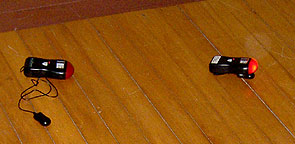
Using Photoshop with a typical orb, the characteristic colors are revealed. This next photo could have been taken anywhere, but I was at Fort George in Ontario, Canada. Though skeptics will look at this kind of photo and explain it as dust, pollen, or moisture, this orb was photographed by about four of us, each standing about 10 – 30 feet apart, pointing our cameras in the same direction. Mapping its location relative to landmarks we were seeing from different angles, it was easy to show that we were all photographing the same orb.
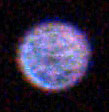
Some photos show a streak of light, often described as a vortex. Unfortunately, a large number of vortices (plural of vortex) look identical to camera straps. So, we’re not sure how many of those photos show something paranormal. It’s too easy to explain them as a forgotten camera strap that fell in front of the camera.
However, if you have a photo with an image like this and you’re sure no camera strap or similar object was near the lens of the camera, you might have an anomaly we call a vortex.

Sometimes, we see light-emitting shapes or figures in real life, not just in photos. Weirdly, those anomalies rarely show up in photographs.
They could be circular shapes or spheres. They might be rods of light. Or, in very rare cases, they assume the form of a figure, like an apparition.
These kinds of ghostly figures are best seen and photographed after dark. Though I’ve taken photos of daytime orbs, with no flash or possibility of lens flare, the vast majority of light-related anomalies are photographed at night.
That’s one reason for a lights-out investigation at haunted sites.
Ghosts that are shadows
Ghostly shadows — sometimes “shadow figures” — are among the most disturbing ghostly phenomena we encounter. We don’t know what they are, but they can seem a lot more covert and sinister than the ghosts we usually study.
The photo below, taken at a private residence near Laconia, New Hampshire, shows an eerie shadow figure we saw in a fully-lit basement. It’s one of many troubling photos from that investigation. In real life, the figure looked like a tall man. There was nothing to explain that shadow. I could see the cause of almost every other shadow, but not that one.
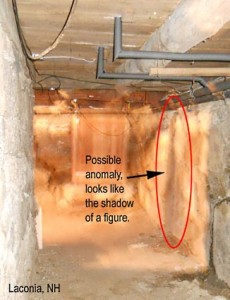
The figure in the photo, above, is unusual because shadow figures usually seem to hide among other shadows.
We’re not sure what these figures represent. Sometimes, they appear individually. At other times, they seem to travel in groups or packs.
In general, I don’t recommend lingering at any location where you see shadow figures. We’re not sure that they’re as benign as what we usually call “ghosts.”
Ghosts that Absorb Light
At the present time, we’re not sure if shadow figures or “ghost shadows” are actually casting a shadow, if they are simply dark figures, or if they’re absorbing light like a black hole.
If they’re absorbing light (and perhaps energy), that’s another very good reason to be cautious if you ever see a shadow figure.
We don’t know what these are, and if they’re a separate kind of entity.
Ghosts that are apparitions
Apparitions are ghosts that look like they did in life. Sometimes they’re more-or-less translucent. Others look like living people, but they may appear to be in historical costumes.
It seems that there are very few photos of apparitions. Here’s a classic, the Brown Lady, photographed in 1936 by Captain Hubert C. Provand.
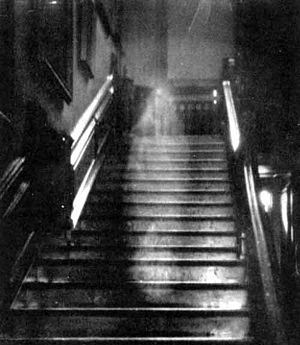
I have three of theories about why we don’t see more credible photos of apparitions:
- Most apparition photos aren’t credible, and look like double exposures or as if they’ve been created in Adobe Photoshop.
- Often, the anomalies we see in real life don’t show up in our photos, and vice versa.
- Many apparitions seem so lifelike, we don’t realize they’re ghosts until they fade or abruptly disappear… and then it’s too late to get a photo.
Those are the three kinds of ghosts you can see… maybe: Ghosts that emit light, ghosts that are shadows, and ghosts that seem to have physical form and look a lot like they’re living people.
A fourth category, ghosts that absorb light so they’re not just shadows but something like black holes, is a troubling concept that has yet to be explored.


 Banshees… should ghost hunters look for them? And if you do, could you even find one?
Banshees… should ghost hunters look for them? And if you do, could you even find one?
 TV shows don’t represent how many houses we visit that aren’t haunted.
TV shows don’t represent how many houses we visit that aren’t haunted. 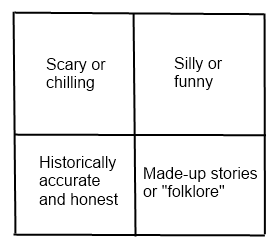
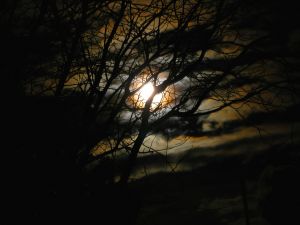 Recently, I spoke at the Central Texas Paranormal Conference in Austin. During the event, I chatted with another speaker at the event, Dash Beardsley (owner of
Recently, I spoke at the Central Texas Paranormal Conference in Austin. During the event, I chatted with another speaker at the event, Dash Beardsley (owner of 
 Important warning
Important warning